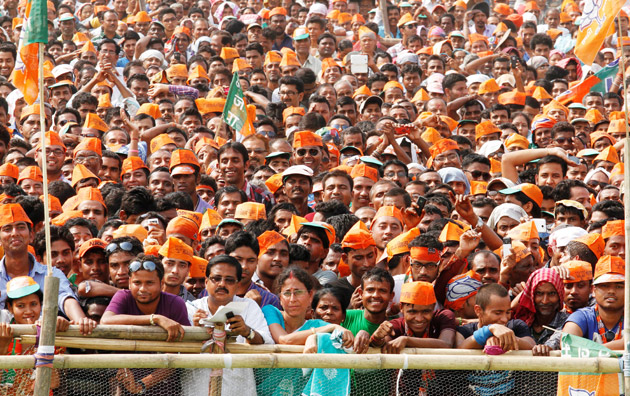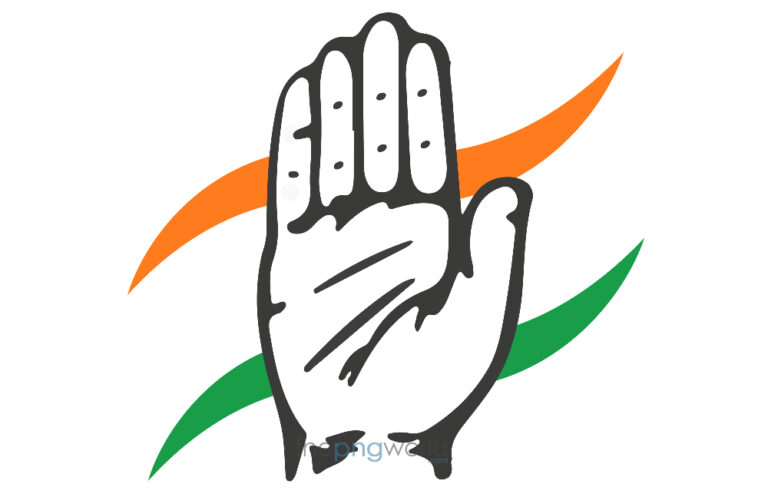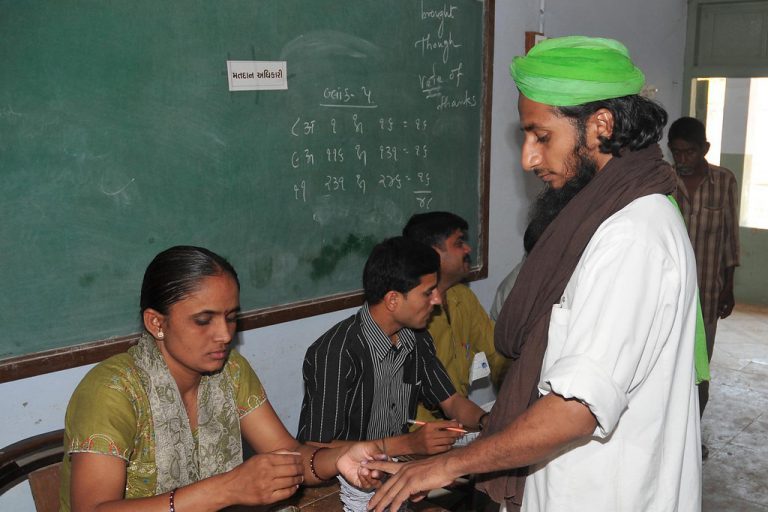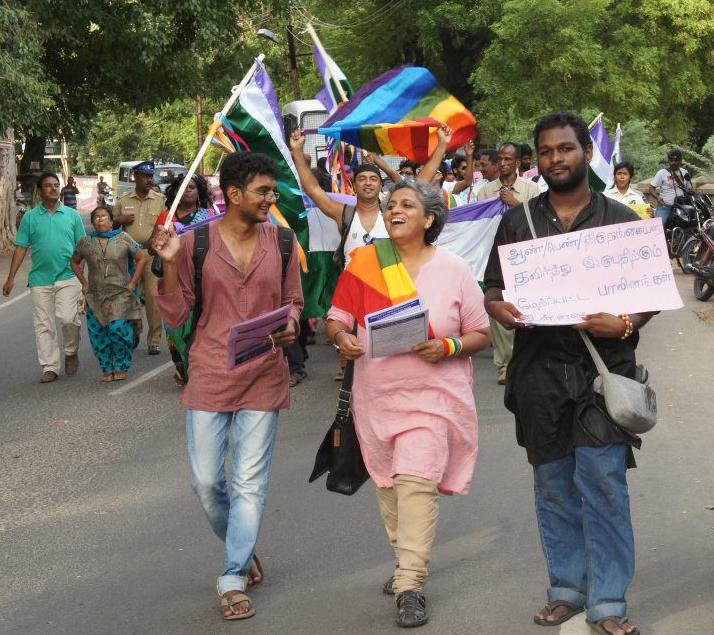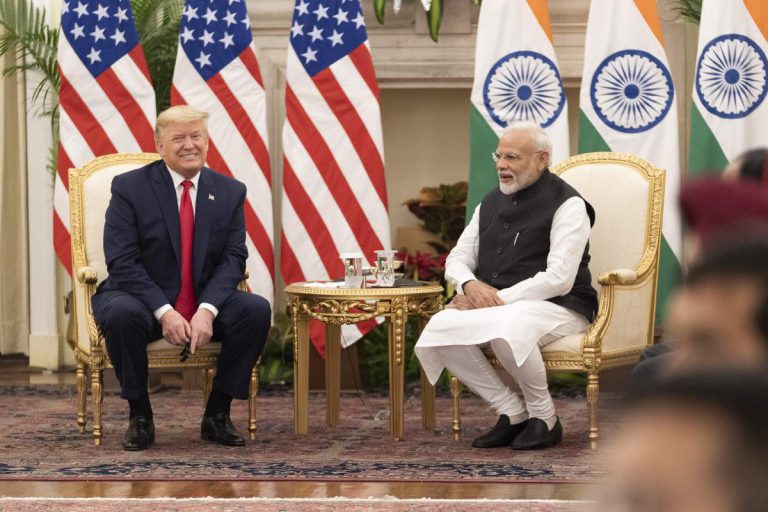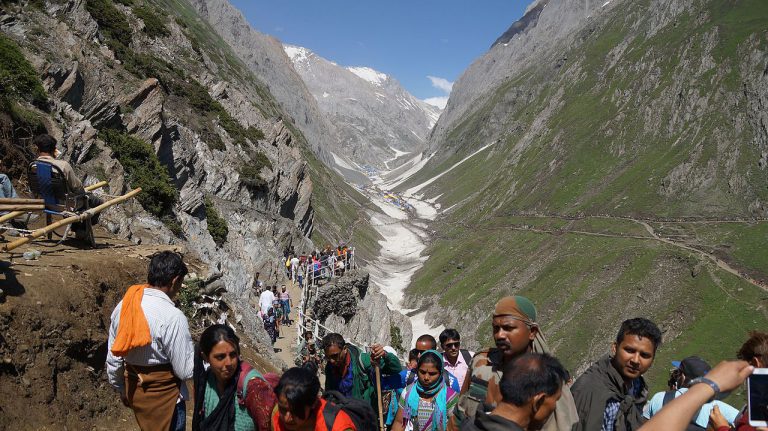Saffron’s second innings: Decoding the Assam verdict

Dwaipayan is pursuing his Master's degree in International Relations from Jadavpur University, Kolkata .He is interested in public policy, political affairs and International Relations.
Devansh is currently pursuing his B.A. LLB degree from Llyod Law College,Greater Noida.He is interested in political and legal affairs.
Following the predictions of most exit polls, the people of Assam re-elected the incumbent Bharatiya Janata Party (BJP) or Saffron Party – led National Democratic Alliance (NDA) for another term. This marks the first time that a non –Congress alliance has won two consecutive terms in Assam. The Assam election was held in three phases from March 27 to April 6. The NDA also had Asom Gana Parishad (AGP) and United People’s Party Liberal (UPPL) as its constituents. The NDA managed to win 75 out of the 126 seats up for the contest. Himanta Biswa Sarma was sworn in as the Chief Minister of Assam on 10th May 2021. He succeeds Sarbananda Sonowal.
The Indian National Congress (INC)-led 10- party ‘Mahajot’ put up a tough fight against the NDA. The Congress had stitched up a pre-poll alliance with the All India United Democratic Front (AIUDF) led by perfume baron Badruddin Ajmal. The Bodoland People’s Front (BPF) made its re-entry into the Congress-led alliance after it was conveniently ditched by the Saffron Party, BJP, in favour of the newly rising UPPL. The various Left parties like the Communist Party of India (Marxist)(CPI-M), Communist Party of India(CPI) and Communist Party of India(Marxist-Leninist)Liberation (CPI-ML) were also part of the Mahajot. The alliance could win only 50 seats with Congress and AIUDF winning 29 and 16 seats respectively. The new Assembly will see a Left party being represented in the House after a gap of 10 years. CPI-M recaptured its former stronghold, the Sarbhog seat in the Barpeta district.
THE MAJOR TAKEAWAYS FROM THE RESULTS:-
1) Does Mathematics Work in Politics?
YES, mathematics works in politics, as it does everywhere else. When parties are in a pre-poll alliance their supporters work together and generally vote for each other on a seat by seat basis which helps the alliance win the maximum number of seats. The final numbers play a crucial role in government formation in a post-poll alliance too. However, alliances based purely on numbers sometimes fail on the ground against larger ideological and political issues or when the cadres of parties in alliance do not help each other. There are a few examples of the failure of numbers based alliances in Indian politics as well. In the 2019 Lok Sabha elections, the Samajwadi Party, the Bahujan Samaj Party and the Rashtriya Lok Dal formed an alliance to face the bigger opponent, BJP, in Uttar Pradesh. Saffrons swept Uttar Pradesh and this alliance based on pure mathematics failed to make much of an impact.
The Assam election is another example where a strategy based on flawed calculations failed in politics. The Mahajot had a big advantage in terms of numbers but it failed to capture power because of a variety of reasons. Muslims constitute about 34% of the state’s total population, of which only 4% is indigenous Assamese Muslims. The Congress hoped that the alliance with AIUDF will consolidate minority votes and will bring the Mahajot into power. The BPF, which has been the main party of the Bodo community for over two decades now, was also expected to contribute a fair share of the Bodo votes to the alliance. However, the strategy backfired.
2) Polarisation:
Even though the Congress’ alliance with AIUDF helped the Mahajot do well in minority-dominated areas; it resulted in substantial consolidation of Hindu votes in favour of the Saffron Party. According to the CSDS- Lokniti post-poll survey, 86% of BJP’s voters were Hindu and 72% of Mahajot’s voters were Muslims. The BJP has politicised the issue of an influx in Assam over the years. The party has repeatedly accused the previous Congress governments of harbouring illegal Muslim immigrants from Bangladesh in exchange for political support. The BJP leadership labelled the Mahajot as an “Alliance of Mughals” and claimed that the Congress’ alliance with the AIUDF made the polls into a “conflict of civilisations”. The BJP was successful in portraying the Mahajot as an alliance that is opposed to Assam’s indigenous interests. Himanta made a distinction between indigenous Muslims and ‘Miya’ Muslims and proclaimed that the Saffrons do not want to come to power with the votes of the latter as they are not originally from Assam and have been trying to hurt the Assamese culture. The BJP, however, have no problems with the Bengali Hindu “refugees” living in Assam.
The BJP has been successful in changing the prominent ‘Bengali versus Assamese’ narrative to a ‘Hindu versus Muslim’ narrative. This helped them make big gains across the Hindu-dominated seats and paint Upper Assam and North Assam completely Saffron. The BJP also did well in the seats of the Hill Districts region and the constituencies surrounding Guwahati. The AGP did particularly well in Central Assam and Upper Assam, mostly along the Brahmaputra river. It is important to note that the AGP is swiftly losing its strongholds to the BJP. This indicates that the voters who used to take pride in being ardent backers of linguistic sub-nationalism have now drifted towards Saffrons and Hindutva-driven religious nationalism. The UPPL did extremely well and won 6 seats in Bodoland, outshining the dominant BPF. The Mahajot dominated the seats in Lower Assam and Barak Valley. Its performance in a cluster of seats between Mangaldoi and Nowgong is also credible.
3) Government’s Performance :
The incumbent government’s work has received appreciation from all sections. The party is immensely popular among the rural voters and those belonging to the lower-income groups for various welfare schemes like the Orunodoi scheme, Arundhuti scheme, Pragyan Bharati scheme etc. Infrastructural projects like building medical colleges and hospitals have helped in bridging the communication gap in the state which has historically suffered from a lack of development. Central government schemes like the Pradhan Mantri Awas Yojna have made the lives of the poor easier. Himanta Biswa Sarma’s work as the Health Minister during the COVID-19 induced lockdown has received praise from almost everyone. The Public Works Department (PWD), also headed by Sarma, has been involved in many development initiatives like building roads. It must be noted that class, education and locality were important factors for voting and the government’s work did fetch votes for the BJP. The women voters, in particular, were impressed by the policies and voted favourably for the Saffrons.
4) BJP’s Strategy and the HBS Factor:
The Saffron campaign in Assam was led by the dynamic duo of Sonowal and Sarma. Although there were some tensions between the two camps on the eve of the election regarding who would be the Chief Minister in case of an NDA victory, such factionalism did not come to the forefront. The campaign was well managed by both leaders. The popularity of the Central leaders like Prime Minister Narendra Modi and Home Minister Amit Shah helped swing a considerable amount of votes in favour of the BJP. Almost every Hindu caste including Upper Castes, Other Backward Classes (OBCs), Dalits, and Scheduled Tribes (STs) has voted for the BJP in high numbers. Major ethnic communities such as Karbis, Dimasas, Misings, Rabhas and Tiwas have reaffirmed their faith in the BJP. Tea garden workers too have once again reposed their trust in the BJP.
Even though the BJP-led government was rocked in 2019-20 by anti-Citizenship Amendment Act (CAA) protests after the Act was passed, the party has been successful in regaining its mass appeal. The COVID-19 pandemic took out the steam of the anti-CAA movement and the BJP capitalised on it by changing the narrative through infrastructural push and welfare schemes. Incidentally, the most violent protests were seen in Upper Assam where the BJP’s performance has been splendid. This clearly shows that the voters prioritised development issues over the CAA. Himanta Biswa Sarma, who is considered as the ‘Chanakya’ of the BJP in the northeast, was the brain behind the Saffron strategy. He continues to be one of the most popular leaders in Assam and is loved and respected across party lines. He is the convener of the North-East Democratic Alliance (NEDA) and is credited for the lotus blooming in several north-eastern states.
5) Congress’ Strategic Blunders:
The Congress’ alliance with AIUDF came back to bite it in the end. A big chunk of Hindu votes it earlier commanded went to the BJP this time. The Congress was faction-ridden and failed to counter the ‘development’ narrative of the BJP. It missed the leadership of Tarun Gogoi, the former Congress Chief Minister of Assam. The Congress could not put up a credible face against the Sonowal-Sarma duo. It failed to effectively communicate its promises to the people of Assam. The Congress’ non-committal attitude over the fate of CAA, as witnessed with the Sushmita Dev incident, hurt the party. The party’s expectation that the anti-CAA mood would be enough to dislodge the BJP from power was wrongly placed. The poor performance of the BPF also damaged the Mahajot’s prospects.
6.The Impact of the Third Front:
The third front was constituted of the Asom Jatiya Parishad(AJP) and the Raijor Dal(RD). These parties were formed during the anti-CAA protests and are led by Lurinjyoti Gogoi and Akhil Gogoi respectively, who were at the forefront of the anti-CAA protests. Only Akhil Gogoi managed to win the Sibsagar seat from the alliance. Interestingly, the Mahajot and the AJP-RD alliance taken together polled more votes than the NDA in 14 seats. Thus, the third front cut into the anti-BJP votes in many seats, thereby hurting the Mahajot and helping the BJP.
THE RISE OF HIMANTA BISWA SARMA
Himanta Biswa Sarma, popularly known as ‘Mama’, emerged as the biggest winner from the Assam elections 2021. His larger than life personality and give it on the face attitude makes him very different from other politicians. Not only is he a key election strategist, but also a big crowd puller. So much so that some local BJP leaders preferred having Sarma attend their rallies over Modi. A product of the sub-nationalist movement against Bangladeshi immigrants, Sarma played a crucial role as a member of the All Assam Students’ Union and later, the Congress. In 2001, Himanta contested against AGP’s Bhrigu Phukan, his first political mentor, and defeated the heavyweight from Jalukbari constituency on a Congress ticket. He became a Minister in the Tarun Gogoi government in 2004 and handled many key portfolios like Health, Finance, PWD and Education and often outshone various Cabinet colleagues.
After Tarun Gogoi started promoting his son Gaurav in politics, Sarma felt sidelined, left the Congress and joined the BJP in 2015. That proved to be the turning point in BJP’s fortunes in the northeast. Himanta almost single-handedly brought down the various Congress alliances in the northeast. He was responsible for successfully plotting a Saffron coup in Arunachal Pradesh, toppling the Congress and stitching up a BJP-led alliance in Manipur in 2017, cutting political deals to form a non-Congress government in Meghalaya and the formation of a BJP alliance with former rivals, the Naga People’s Front and the Nationalist Democratic Progressive Party.
Himanta’s dream of becoming the Chief Minister of Assam was not a secret. His displeasure on Tarun Gogoi preferring Gaurav over him was well known. Himanta’s wife Riniki shared an interesting story where she had asked him what she would tell her family about Himanta before their marriage. Himanta had replied,” Tell them that I will become the Chief Minister of Assam one day “. In 2021, he made his intentions more clear by making the campaign largely based on him. The frenzy of the crowd when Himanta arrived with the ‘Ahise Himanta Ahise’ song playing in the background made it apparent to the BJP high command that it was time to crown him the Chief Minister. Himanta’s incredible work both as an administrator and as a politician won over sections of the BJP and the Sangh Parivar who earlier had reservations to trust a former Congress member as the Chief Minister. Some political commentators believe that this is not the final stop in the rise of Himanta Biswa Sarma and he could be made the in-charge of West Bengal, a state where Saffron Party failed to assume power in 2021, along with the north-east. The BJP would benefit from the political acumen and the organisational skills of Sarma and he could also become the voice of the northeast in New Delhi.
Featured Image: Wikimedia


